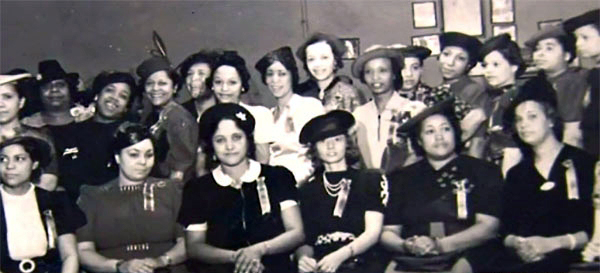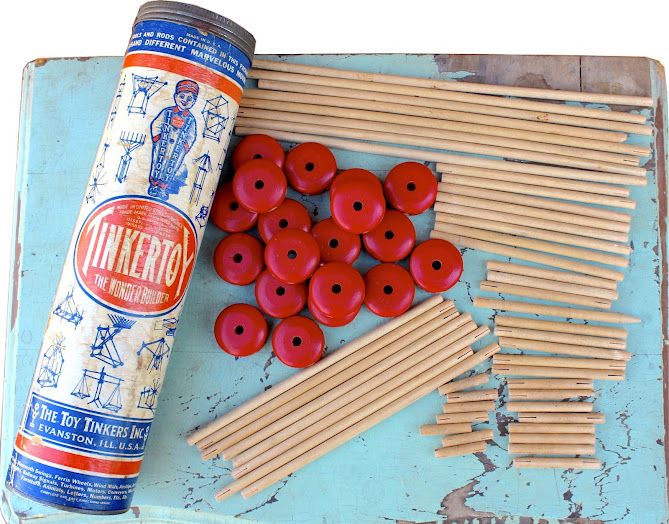 |
| Ida Bell Wells-Barnett |
The first negro women's club, the "Ida B. Wells Club," was created in 1893. The need for its establishment arose from several circumstances. First, during the 1890s, there was an emergent middle-class negro population to which most club women belonged. Ida B. Wells was indicative of such social-class standing. A former schoolteacher in Memphis, Wells had married a prominent negro lawyer, Ferdinand Barnett. Like other middle-class negroes, Wells subscribed to W.E.B. DuBois's model of leadership, which called for the "talented tenth," those few negroes who had the relative privilege of education and comparative wealth to assist those less fortunate. As early as 1893, Wells perceived the need for a kindergarten for negro children and so established a club that, in turn, sponsored a kindergarten. Although some negroes criticized her as a segregationist, Wells was swift in her rebuttal: If negro children had been admitted to other kindergartens, there would have been no need to create a separate one.
 |
| A Colored Women's Club in Chicago. |
Given the increased segregation of negro communities in the early twentieth century, negro club women created kindergartens and day nurseries. They also opened social settlements, reading rooms, youth clubs, children's camps, homes for dependent and orphaned children, and the elderly and infirm.
Club members also studied literature, art, drama, and municipal reform. Working in conjunction with other negro community institutions, club women were deeply involved in politics, advocating for suffrage, fighting discrimination in movie theatres and other public facilities, and promoting the passage of an anti-lynching law. They also raised much-needed monies to support those community institutions by sponsoring debates, theatre and musical presentations, picnics and raffles, and extravagant charity balls, dances, and promenades. These occasions served two ends: to assist the poor and disenfranchised and to demonstrate the club women's own status and prestige. These ends were not contradictory but instead pointed to the richness and complexity of the club women's lives. Additionally, club women supported negro milliners, dressmakers, hairdressers, and manicurists for their grand balls and dances. This in itself was significant because employment was quite limited for negro women.
The ideology of most of the negro women's clubs reflected that of the National Association of Colored Women's Clubs (NACWC), founded in 1896 in response to a white journalist's insulting letter about negro women. Club women, who subscribed to the strictest model of respectability, believed it was incumbent upon them to respond by forming clubs that would teach and model middle-class respectable home life, child care, and proper codes of social behavior for poorer negro women. The national motto, "lifting as we climb," spoke to these issues of social class and social uplift. However, the club women's concept of motherhood was not limited to the Home. Unlike white club women's and social settlement founders' ideas of "social motherhood," negro women extended their roles as mothers into the community to enact municipal, civic, and educational reform. After all, they reasoned, any environment that affected children required the agency of women. Further, these activities coalesced with their desire for increased political visibility and the vote.
Indeed, most of the female political clubs in Chicago focused on suffrage. However, even before they had the right to vote, negro women were well aware that they could influence their husbands. As early as 1900, one member of the Phyllis Wheatley Club spoke about the crowded tenements on Chicago's south side and urged her club members to influence their husbands to vote for Aldermen who would improve this situation. One of Chicago's first women's clubs to promote suffrage was the Frederick Douglass Woman's Club, founded in 1906. This club was noteworthy because it was one of the few interracial women's clubs in Chicago. Women became acquainted with political candidates' platforms and discussed community issues from various angles.
Not surprisingly, one of the most prominent negro suffragists in Chicago was Ida B. Wells, who organized several suffrage clubs, including the Women's Second Ward Republican Club (1910) and the
Alpha Suffrage Club (1913). The latter club sponsored Wells's participation in the national suffrage parade in 1913. Although she was ordered to march in the "colored section," Wells refused and marched alongside prominent white Illinois suffragists.

The Alpha Suffrage Club distributed a newsletter,
"The Alpha Suffrage Record," that included information about various candidates and recommended candidates and provided a directory of voting locations in each Chicago ward. When women were granted the right to vote for city commissioner in 1915, the Alpha Suffrage Club banded together with other negro women's clubs to form a voting bloc. And they continued, as did many other negro women's clubs, to agitate for the vote on the national level. They sponsored a speakers' series, participated in suffrage parades, wrote editorials, debated issues, and educated others.
Negro club women also protested discrimination in the Chicago schools, employment, and public institutions. They were active in securing legal representation for negros in court cases, in fighting legislation that outlawed interracial marriages, in protesting Marshall Field & Company's refusal to hire negro women along with other retail companies, and in writing editorials about racist movies, such as
"The Birth of a Nation," (full movie) shown in Chicago theaters in 1915. In some cases, the women were successful in procuring office-type employment for a few negro women. In other cases, their success was not so evident, although one could argue that their activism brought publicity to the pervasive problems of discrimination.
In the creation of social welfare institutions, the success of negro women was evident. These women organized and sustained community institutions for poor children, working mothers, working women, and the elderly. Again, club women enlarged their visions of family and Home to create the Louise Juvenile Home for dependent and orphaned boys, the Amanda Smith Home for dependent and orphaned girls, the Phyllis Wheatley Home for single working girls, the Home for the Aged and Infirm; Colored People Home for the elderly; several social settlements, day nurseries, Kindergartens and after-school programs for children. Club women provided toys, food, clothing, and money for coal for the facilities. They also performed plays and sponsored musicals, raffles, picnics, and grand balls to raise funds for building repairs, furniture, groceries, and other necessities. Lastly, they volunteered their time organizing Christmas parties for the orphaned children, cleaning the facilities each spring, visiting the elderly, and supervising after-school programs. When one considers the prodigious amount of resources and volunteerism required for the sustenance of these facilities and the large amount of time to complete the necessary collaboration among the many clubs. The contributions these women made were formidable.
In addition to building community institutions, club women were interested in various forms of self-improvement and education. Higher education was increasingly accessible to women during the late 1800s, primarily through women's colleges, land-grant institutions, and historically negro colleges. However, given their age, life circumstances (many were married, with children), and the discrimination of some higher educational institutions, many negro club women in Chicago had limited access to a college education. Still, some club women were doctors, lawyers, social workers, and teachers, and so had been professionally trained. But by and large, many club women had to continue their education through more informal means, such as the literary clubs. These clubs provided opportunities for reading classical and negro literature and papers about philosophy, sociology, religion, travel, and political thought. Furthermore, those women improved their literary skills through discussion, critiquing, debating, interpreting, presenting original poems and essays, and performing plays, often written by talented club members. Indeed, some club women were known for their writing, including journalist Ida B. Wells, poet Bettiola Fortson, and essayists Fannie Barrier Williams and Irene McCoy Gaines.
Once again, these literary clubs were selective. It was not sufficient to be literate; one had to be literary. Club women discussed Shakespeare and Emerson in the privacy of their home parlors but sponsored forums for the general public in churches, where youth might participate in oratory or essay contests. Similarly, club women invited prominent speakers to their meetings, including negro intellectuals; W.E.B. DuBois, historian Carter G. Woodson, and Booker T. Washington, founder of the industrial school Tuskegee Institute. The club women interspersed literary study with musical recitals at their meetings. Again, the club women's tastes were diverse. They listened to classical music on a Victrola and the indigenous spirituals and negro jubilee singing performed by Fisk University students. Similarly, they studied classical art and the artwork of little-known negro artists such as Henry O. Tanner.
As mothers do, the club women reached out to children and youth by sponsoring their academic programs. In particular, the club women supervised many lyceums (halls for public lectures or discussions) in negro churches that featured debates and essay and oratory contests. One topic for a 1913 essay contest was "What Has the Negro Contributed to the World for the Advancement of Civilization?" Miss Leonora T. Curtis, representing the Negro Fellowship League, was awarded the first-place prize, a lavallière necklace set with diamonds.
 |
| A Lavallière Necklace |
Mr. Joseph A. Marshall, representing the Bethel Literary Club, won the second prize, a gold scarf pin set with a diamond. The winning essay was published in the Chicago Defender, one of several Chicago negro newspapers, described ancient African civilizations and the accomplishments of negro inventors, scientists, authors, and musicians. Through such lyceums, youth were educated into future positions of leadership in the community. Additionally, children were educated by speakers that the club women sponsored.
In some cases, prominent club women spoke on the importance of women's work. In other cases, local or national politicians spoke about "Race progress." The last type of clubs are social and card clubs, which are usually not studied by scholars. But they were not frivolous and self-serving, despite such depictions of them. Instead, they presented the same opportunities as other negro clubs for social status and fundraising. For example, there were many card-playing clubs, especially whist (a classic English trick-taking card game) and progressive whist games. The descriptions of their events emphasized their six-course luncheons, the women's outfits, the decor, and the prizes they won. In the latter case, winners of the whist tournaments received prizes such as cut-glass sherbet glasses, sterling silver hat pins, and gold cuff buttons. However, not all of these social clubs were devoted solely to entertainment. Club fees were collected for charity or other worthy causes.
Perhaps the most exciting types of social clubs were the matrimony clubs. Although few in number, their purpose was to assist young men and women in meeting marriage partners from similar social classes. Again, the issues of status, prestige, and social class were at play. The descriptions of social events were often humorous, including the reluctant bachelor, the "dashing" widow, and the "new stunts" tried by a young woman to persuade her boyfriend to propose,
Clearly, there were many kinds of women's clubs in the negro communities of Chicago. Most were involved in social uplifts, such as supporting kindergartens, nurseries, social settlements, and housing.















